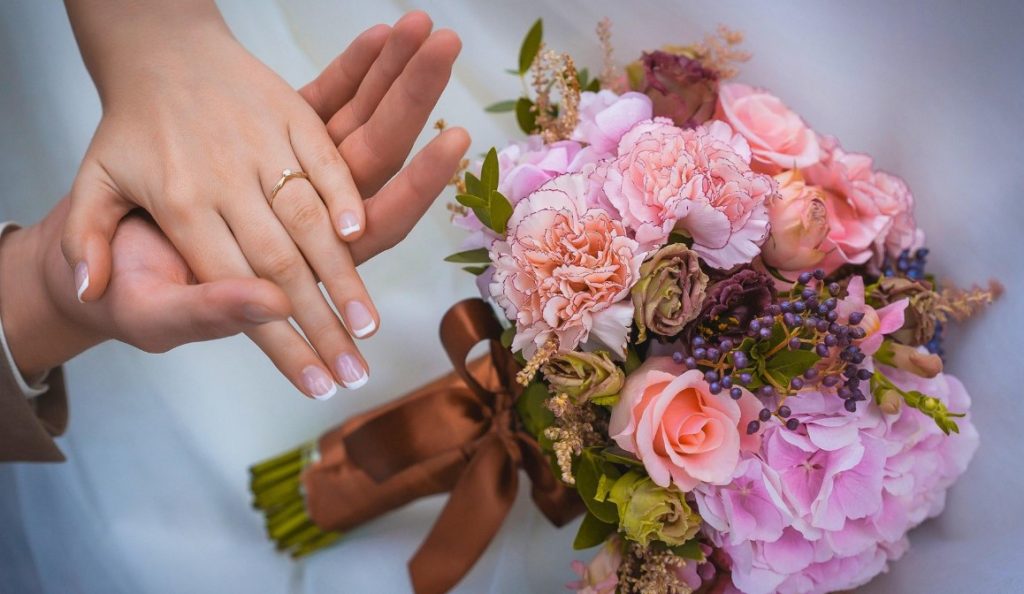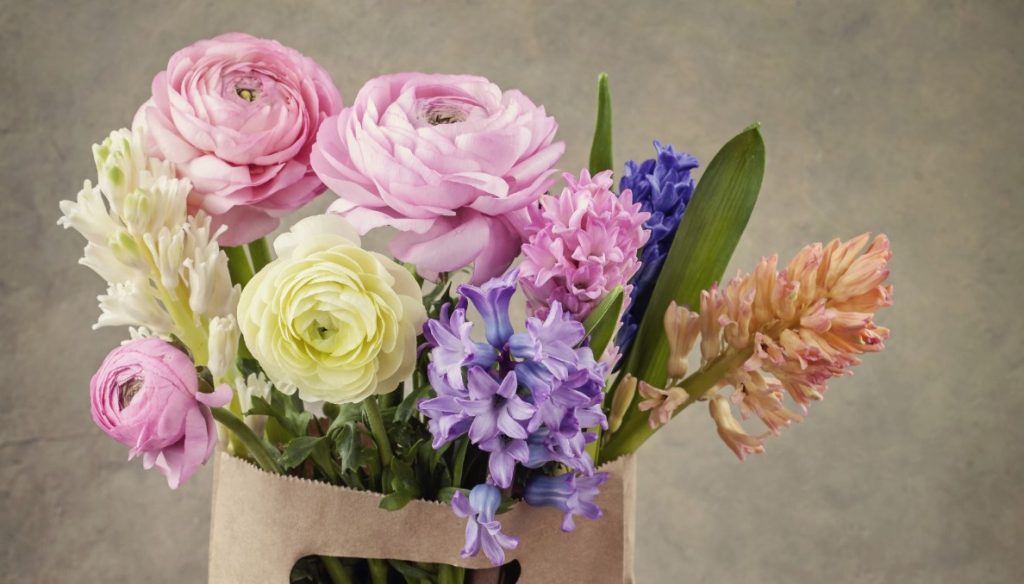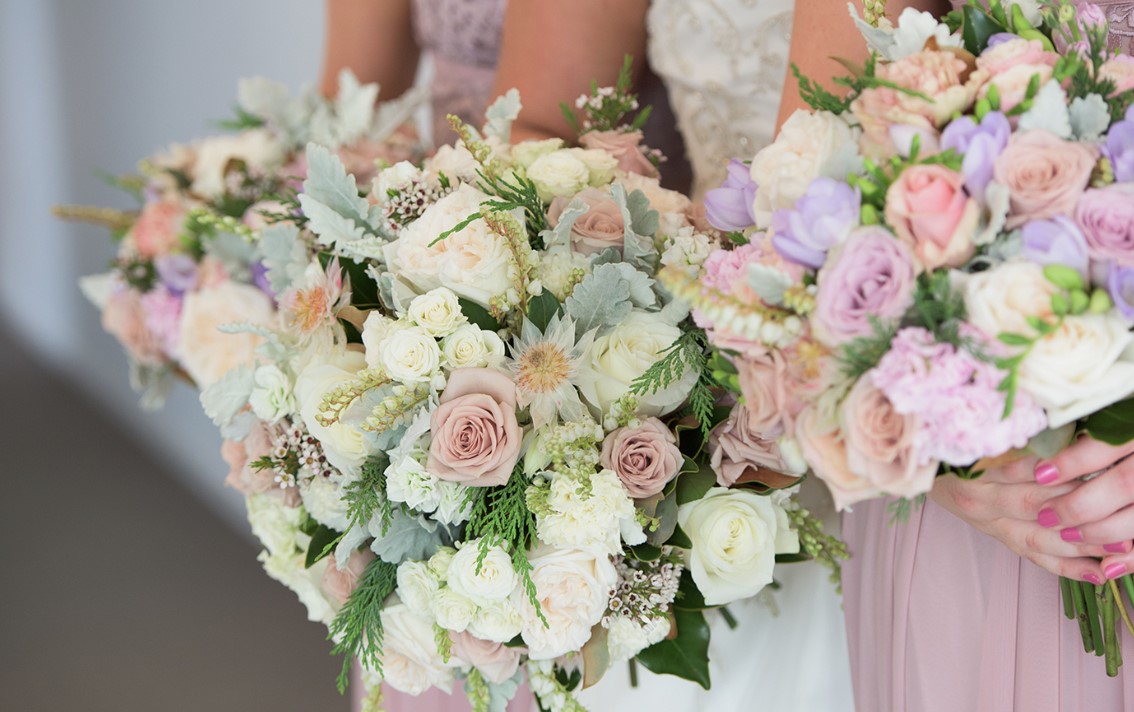Flowers have long been considered one of the most thoughtful and cherished gifts for women. They symbolize tenderness, love, and care, capturing emotions that words often fail to express. The process of creating flower bouquets and arrangements is not only a delightful activity but can also evolve into a sophisticated art form. Beautiful “flower bouquets” and arrangements serve to adorn our homes, bringing joy and inspiration to our everyday lives. In this article, we will explore the intricacies of assembling stunning compositions from fresh flowers, covering everything from flower selection to care tips to ensure your arrangements remain vibrant and appealing.
Choosing the Right Flowers
The foundation of any beautiful flower arrangement lies in the careful selection of flowers. This choice is influenced by several factors:
Seasonality and Freshness
Opt for seasonal flowers as they tend to be fresher, more vibrant, and often more affordable. Fresh flowers not only look better but also last longer, ensuring that your arrangement maintains its beauty over time. Seasonal flowers also reflect the current time of year, bringing a natural element of the outdoors into your home.
For example, spring is the perfect time for tulips, daffodils, and hyacinths, while summer offers an abundance of roses, sunflowers, and lilies. Autumn brings the rich hues of chrysanthemums, dahlias, and marigolds, and winter showcases the elegant beauty of poinsettias, holly, and amaryllis.
Color Scheme and Style
Consider the color scheme and style of your arrangement to ensure harmony among the flowers. For a romantic composition, pastel shades like soft pinks, lavenders, and whites work beautifully. If you aim to create a bright and dynamic arrangement, rich and contrasting colors such as bold reds, deep blues, and vibrant yellows are ideal.
A monochromatic arrangement, which uses different shades of the same color, can create a sophisticated and elegant look. On the other hand, a complementary color scheme, which pairs colors opposite each other on the color wheel, can create a bold and striking effect.

Variety and Texture
Combining different types of flowers can create an interesting and layered effect. Mixing various textures and shapes adds depth and dimension to your arrangement, making it visually appealing. For instance, pairing delicate blooms like roses with bold flowers like lilies can create a striking contrast.
Foliage and greenery, such as ferns, eucalyptus, and ivy, can add texture and fullness to your arrangement. Additionally, incorporating elements like branches, berries, and ornamental grasses can add an unexpected and creative touch.
Essential Tools and Materials
Creating flower arrangements requires specific tools and materials to ensure precision and stability:
– Scissors and Pruning Shears: Essential for trimming stems to the desired length and removing excess foliage.
– Floral Foam (Oasis): Used to anchor flowers in place within a container, providing stability and support.
– Wire and Floral Tape: Useful for securing stems and maintaining the shape of the arrangement.
– Vases, Containers, and Baskets: Various types of containers can be used to hold the flowers, adding an extra touch of style and elegance.
Additional Tools and Materials
– Floral Pins and Clips: Help secure flowers and foliage in place, especially in more intricate arrangements.
– Floral Glue: Useful for attaching smaller blooms and decorative elements.
– Water Sprayers: Keep flowers hydrated and fresh during the arranging process.
– Decorative Accents: Ribbons, beads, stones, and other accessories can enhance the visual appeal of your arrangement.
Basic Arrangement Principles
To create a harmonious and aesthetically pleasing flower arrangement, adhere to these fundamental principles:
Symmetry and Balance
Ensure that flowers are evenly distributed to prevent the arrangement from looking one-sided. Symmetry can create a sense of order, while asymmetry can add a touch of modernity and dynamism. Balancing the visual weight of different elements ensures that the arrangement is pleasing to the eye.
Proportions
Consider the ratio of height to width in your arrangement. A balanced proportion ensures that no single element overwhelms the others. Additionally, pay attention to the sizes of individual flowers to maintain a cohesive look. The golden ratio, a mathematical principle often used in art and design, can be a helpful guide in achieving pleasing proportions.
Focal Point
Establish a focal point in your arrangement that draws the eye. This can be a particularly striking flower or a group of blooms that stand out due to their color or size. The focal point serves as the centerpiece of the arrangement, creating visual interest and guiding the viewer’s gaze.

Flower Placement
Position tall flowers at the center or back of the arrangement, while shorter, fuller blooms should be placed along the edges or front. Gradually decrease the color intensity as you move away from the center to create a natural gradient effect. This technique, known as radial placement, mimics the way flowers grow in nature, resulting in a more organic and balanced look.
Advanced Arrangement Techniques
For those looking to elevate their flower arranging skills, consider experimenting with these advanced techniques:
Layering
Layering involves placing flowers at different heights and depths within the arrangement to create a sense of depth and dimension. This technique adds complexity and interest, making the arrangement more dynamic.
Grouping
Grouping similar flowers together in clusters can create a bold visual impact. This technique emphasizes the individual beauty of each type of flower while adding structure and rhythm to the arrangement.
Line Arrangements
Line arrangements focus on creating strong vertical or horizontal lines using flowers and foliage. This minimalist approach can be striking and elegant, often used in modern and contemporary designs.
Mass Arrangements
Mass arrangements use a large quantity of flowers to create a lush, full look. This technique is perfect for creating statement pieces and adding a touch of opulence to any space.
Caring for Your Flower Arrangement
Proper care is essential to prolong the life of your flower arrangement and keep it looking fresh and vibrant:
Extending Flower Life
Use clean water and add special floral preservatives to prolong freshness. These products help nourish the flowers and prevent the growth of bacteria. You can also make your own preservative solution using a mixture of water, sugar, and vinegar or lemon juice.
Regular Water Changes and Stem Trimming
Change the water every 2-3 days and trim the ends of the stems at an angle to improve water absorption. This practice helps keep the flowers hydrated and prevents wilting. Removing any leaves that fall below the waterline can also prevent bacterial growth.
Vase and Container Maintenance
Keep vases and containers clean to avoid the development of bacteria, which can shorten the lifespan of your flowers. Clean containers also enhance the overall appearance of the arrangement. Using a mild bleach solution to sanitize vases between uses can help keep them in top condition.
Temperature and Light
Place your flower arrangement in a cool, well-lit area away from direct sunlight, drafts, and heat sources. Extreme temperatures can cause flowers to wilt and fade more quickly. Overnight, you can move the arrangement to a cooler area, such as a basement or refrigerator, to extend its freshness.
Types of Flower Compositions
There are various types of flower arrangements, each with its own unique charm and application:
Bouquets
Bouquets are versatile and can be designed for various occasions, from weddings to birthdays. They can be hand-tied or arranged in a vase. Hand-tied bouquets are particularly popular for their rustic and natural appearance, while vase arrangements offer a more polished and structured look.
Flower Baskets
Flower baskets are charming and can be used as decorative pieces for tables, entryways, or as gifts. They often include a mix of flowers and greenery, creating a lush and abundant appearance. Flower baskets can be themed for different seasons and occasions, making them a thoughtful and personalized gift.
Ikebana
Ikebana is the Japanese art of flower arrangement, emphasizing minimalism, balance, and harmony. It often involves using fewer flowers and focusing on line and form. Ikebana arrangements are known for their simplicity and elegance, often incorporating natural elements like branches, leaves, and stones.
Flower Garlands and Wreaths
These are perfect for festive occasions and can be used to decorate doors, tables, and even worn as accessories. Garlands and wreaths can be made from a variety of flowers and greenery, offering endless possibilities for customization. They are often used in celebrations, such as weddings, holidays, and religious ceremonies.
Interior Compositions
These arrangements are designed to enhance the decor of a room. They can be large and elaborate or small and simple, depending on the space and occasion. Interior compositions often incorporate elements that complement the overall decor, such as matching colors and styles. They can be placed on mantels, dining tables, coffee tables, or used as centerpieces for special events.
Conclusion
Flower arrangements are a beautiful way to express emotions and enhance the aesthetic appeal of any space. By carefully selecting flowers, using the right tools, adhering to basic arrangement principles, and providing proper care, you can create stunning compositions that bring joy and inspiration to everyone who sees them. Whether you are creating a simple bouquet or an elaborate ikebana, the art of flower arranging is a rewarding and fulfilling activity that celebrates the beauty of nature.
Engaging in flower arranging not only allows you to explore your creativity but also provides a sense of relaxation and accomplishment. As you experiment with different styles, techniques, and flowers, you will develop your unique artistic expression. So gather your tools, select your favorite blooms, and immerse yourself in the delightful and therapeutic world of flower arrangements. Whether you’re crafting a gift for a loved one or adding a touch of beauty to your own home, the effort and love you put into your arrangements will undoubtedly shine through.

Skydiver, maker, audiophile, Vignelli fan and TDC honorary member. Working at the nexus of simplicity and mathematics to craft experiences both online and in real life. I sometimes make random things with friends.
